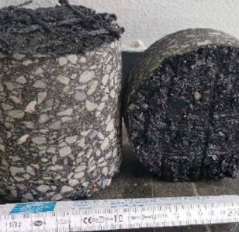Concrete that Heals Itself: A Revolution in Maintenance-Free Buildings
Because of its strength and longevity, concrete has long served as the foundation of construction projects. However, even this strong material will eventually wear down and sustain damage. Common problems including erosion, cracking, and structural degeneration call for expensive and time-consuming repair. But what if concrete had the ability to mend itself? Let me introduce you to self-healing concrete, a revolutionary technology that has the potential to completely transform the building business by enabling own-repairing structures. We’ll explore the realm of self-healing concrete in this blog, including its mechanisms, its uses, and the fascinating opportunities it presents for the infrastructure sector.

Comprehending Concrete That Heals Itself
The properties is a composite material that has the ability to self-heal cracks and other deterioration over time. It uses a variety of methods and materials to accomplish this amazing quality, with the main objective being to preserve the concrete’s longevity and structural integrity.
Concrete that heals itself uses a variety of techniques to fix damage. Here are a few of the main strategies:
- Healing by Bacteria:
With this technology, throughout the production process, specifically chosen bacteria are inserted in the concrete mix. This bacteria don’t do anything till fissures show up. The bacteria are triggered by water entering through the cracks, and they subsequently manufacture calcium carbonate to seal the cracks. This procedure resembles how living things naturally repair themselves.
2.Second, microencapsulation
In the process of microencapsulation, adhesive components or polymer resin-filled capsules are combined with the concrete. The healing chemicals are released when the capsules shatter, filling the cracks and preserving the integrity of the concrete.
- The Vascular Network:
This technique involves embedding a network of microscopic channels into the concrete. A healing substance enters the damaged areas through these channels as cracks appear, successfully sealing the cracks.
- Remedial Chemistry:
When specific chemicals in the concrete react with the products that result from cracks, new cementitious materials are formed, which successfully repairs the damage.
Using Self-Healing Concrete in Applications
Concrete that can mend itself has a wide range of potential uses. This cutting-edge technology is having an impact in a number of fields, including:
- Facilities:
In order to increase the lifespan and lower maintenance costs of bridges, highways, and other vital infrastructure, self-healing concrete can be employed.
- Structures:
it improve structural integrity and lessen the need for maintenance and renovations when it is used in building construction.
- Boats and Yachts:
The self-healing qualities of this concrete can be advantageous for structures exposed to hostile maritime environments, as it provides protection against erosion and corrosion.
- Nuclear Establishments:
Self-healing concrete can offer an additional layer of security and toughness in nuclear power plants, guaranteeing the containment of radioactive materials.
Self-Healing Concrete’s Future
Researchers are always looking for new materials, methods, and applications as they continue to develop and apply self-healing concrete. Technology has the power to completely transform the construction sector by lowering maintenance costs, extending the life of buildings, and improving safety.
Although it’s an intriguing development, self-healing concrete is not a universally applicable solution. Selecting a self-healing method is contingent upon the particular application and surrounding circumstances. As this technology develops and spreads, more affordable, sustainable, and long-lasting construction is anticipated.
In summary
self-healing concrete is a groundbreaking scientific discovery that will revolutionize the building sector. It could result in the construction of low-maintenance structures, cutting expenses while boosting sustainability and safety. In the future, self-healing concrete will likely be used as standard in building, resulting in infrastructure that is more durable, resilient, and requires less upkeep.
